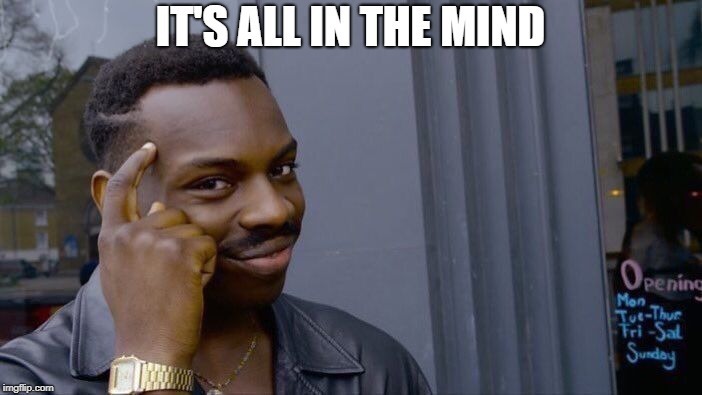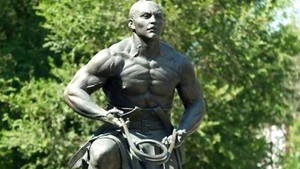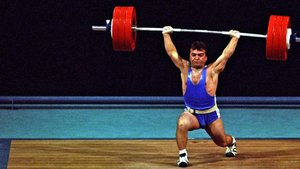Mental toughness is an aspect of fitness that’s often overlooked – yet may hold the secret to keeping you on track towards your goals and smashing through training plateaus.
Let’s dig deeper into the world of mental toughness.
Everything seemed to go according to plan. You followed the program, hit all the numbers and were consistent with your nutrition…and yet, you failed. You didn’t hit the number you had in mind and can’t seem to figure out why.
Another example – every single rep has felt great the past few weeks. You have done all your mobility work, stuck to the program and got in adequate sleep most days this week. Yet, during the second squat session of the week, something doesn’t feel right. Why did 100kg feel heavy? So you get frustrated and plough on forward…yet nothing seems to change. In fact, you become more and more fixated on why everything feels awkward and “off”.
It’s time to pay some attention to your mindset and how psychology plays a role in all of this.
WHAT?
Learn the topic.
In the world of fitness and training, we always focus on the external variables that seem to directly influence your performance yet pay very little attention to the most powerful biological tissue we have available to us: the brain.
Now before we go any further, it’s important to clarify one thing – the subjectivity of mental toughness. Yes, all systems in the human body are inter-dependent and, if the latest research tells us anything, we’ve only scratched the surface of our physical makeup. Yet, if we’ve only scratched the surface with regards our physical makeup, we haven’t even made full contact with the world of the mind and mental toughness.
And this is because of one thing – subjectivity. Or rather, a lack of objectivity.
There are no “physical” – (in the literal sense, being derived from the study of ‘physics’” laws that govern our mental toughness. Although there continues to be a debate in the world of mental health as to whether our behaviours are governed purely by biochemical interaction (measurable) or the unique (and undiscovered) existence of a “soul”; we do know one thing –
We know far less about our behaviour, mental toughness and overall psychology than we do our physical makeup and responses.
In the world of fitness and training, we always focus on everything outside that seems to directly influence your performance yet pay very little attention to the most powerful biological tissue we have available to us: the brain.

Record Breaking Mindset – 4 Champions
We always here of those unique individuals that can push themselves beyond what we thought was achievable.
1. 4-Minute Mile
The most recognisable to the public is probably the legend of the 4-minute mile, broken by the amazing athlete Sir Roger Banister. If you want to see it in action. It truly is a sensational story and held a message that most people weren’t aware of at the time.
2. The 1st to 1000lb
If you haven’t already, you should familiarise yourself with the legendary name that is: Andy Bolton. I had the unbelievable honour of training under his tutelage for a very short period of my life and he made an impact on me that few people ever have. To this day, despite not being as physically strong as he once was, he continues to showcase his strength through mental toughness and sheer determination. Providing inspiration to the entirety of the strength community, Andy Bolton was the first man ever to deadlift a monumental 1000lb/457.5kg, shattering his own world record.
Andy came into this lift with 3 things:
- A sound training methodology that worked for him, that he consistently applied.
- Natural, brute strength.
- The Mindset of a True Champion.
It’s a historic feat that paved the way for 1000s of lifters to show what was truly capable…
*Warning – the video is quite loud!
3. Ignore the Naysayers – 500kg
I will never forget the day Eddie Hall achieved the impossible. It was a significant turning point in my own life, as I vividly recall being one of the Naysayers. I saw a video of him saying the words, “I will deadlift 500kg” and in all honesty…my instant reply was, “Bullsh*t”. There was no way.
I began rationally using a scientific approach to try and calculate the variables required: the timescale, the reps he would have to put in, how fast he would be able to progress. Despite watching his meteoric rise in the Strongman world, I still could not believe it was possible.
Seeing his confidence, I thought it must be for publicity right? I mean, even if 10,000 people turn up live and watch him fail, they’ve still bought the tickets.
As I tuned in to watch the live stream, I saw Eddie Hall approach the warm ups with a kind of confidence and ferocity I’ve never seen in a human before. He lifted 465kg (the previous world record) as if it was an empty bar. A feat most (himself included a year or 2 prior) would dream of achieving.
Then he approached the bar loaded with 500kg. And in that brief moment, Eddie Hall carved his name into the Annals of Strength History as one of the most physically powerful beings to walk the face of the Earth.
Seriously…don’t scroll on without watching this. Even if you’ve already seen it. There is nothing is more inspirational than this lift in the world of physical training. It was the day I wholeheartedly acknowledged the importance of mindset.
Most can’t even begin to comprehend the level of mental toughness that would require.
4. The Strongest Person in the World
Stefi Cohen is one of the most inspirational lifters in the world. She has broken almost every norm that goes with females in the world of strength and has shown what women are truly capable of.
Not just that…she has shown what the human body is capable of, as her displays of strength far exceed the capabilities of the majority of all men, not just women. In the realms of powerlifting, following her earth-shattering display of strength recently this year she became known as the ‘strongest powerlifter ever’ (based off her Wilks Score – a measure of relative strength).
And it’s not to say that these are “thee” most inspirational lifters/athletes of all time. You may think of athletes or people that are completely different (these are my top 4 most inspiring athletes).
Now, it goes without saying, all of these champions had a huge base of knowledge in the realms of building their fitness.
But all the methods were different, what was common among them? How did they all do it?
Mindset, Belief and Imagery
First off, I don’t like the word confidence. It’s an often abused term used to describe the self-esteem of teenagers when looking in the mirror.

Self-belief on the other hand, is a different story. And this is one of the factors that these 4 people had (and still have) in abundance.
I’m not going to go into the reasons why this exists, but purely show case the reasons and evidence to show why it’s so important.
Imagery is also another term we should become familiar with (as it’s one of the more common strategies used in the scientific research). It is essentially “picturing yourself achieving something, before actually physically carrying it out”. It is often said that people like Eddie Hall, had already lifted the 500kg several times over in his mind. The lift itself, was just a formality.
But…You Just Said?
I know. I said that despite all my efforts in analysing the research, Eddie Hall still proved me wrong. However, there are two issues with that.
- There is still lots to be learned from research, especially in the general population…it’s much harder to apply findings from anomalies to the norm.
- Science is built upon constructing theory made from direct observations. The theory can be extrapolated and scaled (particularly when using measurable characteristics and numbers), but it’s much harder with realms like psychology. It’s nigh on impossible to scale something to different situations if there are no numbers to scale it off.
Let’s take an example. We can calculate, from an objective standpoint, the force production capacity of a square cm of muscle tissue. If we take a biopsy and analyse some architectural stuff (a small sample of muscle tissue gathered using a tool that looks remarkably like an apple core remover). If we then electrocute the muscle, using a technique known as “twitch interpolation”, we can figure out it’s maximal force production capacity. Using a few fancy equations, you can then say for every “1cm” of muscle, it produces “x amount of Newtons”. Therefore, if we have “10cm” of this particular muscle, it should produce “10x amount of Newtons”.
Machines vs. Humans
However, this is where there is a huge disconnect.
What a machine is capable of doing (even with biological tissue) is completely different to what the human themselves are capable of. Now, there are several different reasons for this, such as connective tissue/bone strength, neurological inhibition vs. excitation and so on. But a huge element, stems from the psychological capacity of the person.

Evolving to Predators
Human beings are remarkably fickle when it comes to the security of their emotion. One small change in circumstances can have people crying out like the world is about to end. Now this isn’t to poke fun, this is a genuine evolutionary response to crave certainty.
If you read the fantastic book, “Sapiens” by Yoal Hurah Nuvari, he talks about the fact that humans (due to a variety of reasons that I won’t discuss here – seriously, you should read that book), essentially ‘leap-frogged’ up the food chain to secure the top spot. However, because we didn’t “evolve” from a Darwinian standpoint, with millions of years of evolution, honing in on every good quality we possess…
…We exist in the world as a predator, with the meek mindset of prey.
As a result, we crave certainty of our surroundings.
Certainty = a greater chance for survival and therefore, there is less to worry about.
Certainty of Oneself
Now I know, you’re probably thinking this is way off topic, but it’s important to (at least partly) understand our psychological makeup and why we behave as we behave.
The people above didn’t have certainty of their surroundings necessarily. I’m sure that Roger Banister encountered financial problems. Chances are, Eddie Hall didn’t have it all smooth sailing and encountered more problems on his journey to success than most could dream of.
However, they all had one thing in common – they were certain of their own potential.
And although this may sound far-fetched, this is where strength training is so important.
Not only is self-belief and psychology important for developing your strength, but developing your strength also improves one’s self belief.
WHY?
Learn the science and theory.
Imagery – A Barbell on the Brain
Imagery is an immensely powerful tool in the world of sport psychology. It refers to the recreation of a situation/event by involving the use of the senses (8).
And is highly effective at improving strength performance (1, 6, 9).
That’s right. You can literally think yourself stronger.
Research has shown internal imaging techniques to increase little finger abduction strength by 35% and elbow flexion by 13.5%, without any physical exercise (4). Now, you might be saying, “Yeah well, what the hell kind of use is little finger abduction”.
Short of doing your best Dr Evil impression…

…very little.
However, this study gave us an insight into the underlying reasons behind why imagery is so effective on the physical response of the body. Through analysing something known as electroencephalogram-derived cortical potential…

…it was found that mental training enhances “cortical output signal”, which allows for a stronger muscular contraction.
These findings are supported by a more recent study by Yao et al. (10), finding internal imaging to be effective at increasing elbow flexor strength by 10.8% in 6 weeks. Although the subjects may not have been highly trained, it still stands to reason that the mind has a direct influence on the physical output of the body and that imagined muscle contractions may be advantageous to optimize neural activation (5).
“Know Thyself” – Internal Imagery
In the world of mental toughness training, there are two major techniques:
- Internal Imagery: Imagining yourself executing the task. I.E. Feeling the muscle contraction, imagining the tension of the weight and so on.
- External Imagery: Imagining seeing yourself from a 3rd person perspective, achieve what you were aiming to achieve.
And it’s pretty conclusive that internal imagery is far more effective. The greater benefits can be explained by stronger cortical brain activity, higher muscle excitation, greater sensori-motor activation as well as some physiological responses such as blood pressure, heart and respiration rate (7).
Further research comparing both imagery techniques, found a 10.8% increase in strength for internal imagery vs. a much lower 4.8% gain (10).
Importance of Skill
It is also important to note that the effectiveness of imagery is influenced by skill. The more skilful you are ahead of time (i.e. the more experience you have), the more you may benefit from internal imagery training (2), as your body will have a physiological response to the stressor, already ingrained from previous exposure.
HOW?
Learn the implementation.
PETTLEP Model
Originally proposed by Holmes and Collins (3), the PETTLEP Model refers to 7 vital criteria for effective imagery:
- Physical – This refers to imagining the physical responses to a sporting situation (for example, the tension you feel when lifting).
- Environment – Imagining the environment you will be competing or training in.
- Task – Focusing on the task at hand and the performer’s thoughts, emotions and typical feelings.
- Timing – The temporal nature of the task.
- Learning – The content of the imagery evolves with learning.
- Emotion – The affective and emotional response to a situation.
- Perspective – External vs. Internal?

Combine Them (Obviously)…
Now, I’m obviously not saying you should stop training, sit at home eating doritos whilst thinking about training and hope to become stronger. Leave that to the YouTube Keyboard trolls who criticise lifting technique.
However, focusing on and using the mental aspect of training is going to be a great addition to the usual results you get from lifting.
In fact, an even more recent systematic review, concluded that physical training, combined with mental imagery is more effective than just physical execution (7, 9).
Don’t Over-Complicate It
Unless you’re going to a competitive level, the inclusion of mental toughness training doesn’t have to be overly structured to begin with. Simply having a framework and actually acknowledging it’s effectiveness and importance is a great place to start.
Afterwards, you can look into formally setting aside time for “mental toughness training”, but in the mean time, simply thinking about the lift using the PETTLEP model, even on the way to the gym, can be an effective way to “think yourself stronger”.
Summary
- Mindset and mental capacity is a unifying trait amongst all the greats, across sports. All may have used different training protocols, come from different backgrounds, but all possessed higher than usual self-belief.
- As voodoo and pseudo-sciencey as it may come across, imagery has been shown in scientific research to give people strength gains beyond the traditional “training only protocol”.
Reference List
- Chaiwanichsiri, D., Tangkaewfa, S., Janchai, S., & Aksaranugraha, S. (2006). Effects of imagery-weight exercise. Journal of the Medical Association of Thailand= Chotmaihet thangphaet, 89(8), 1260-1264
- Harris, D. V., & Robinson, W. J. (1986). The effects of skill level on EMG activity during internal and external imagery. Journal of Sport Psychology, 8(2), 105-111
- Holmes, P. S., & Collins, D. J. (2001). The PETTLEP approach to motor imagery: A functional equivalence model for sport psychologists. Journal of applied sport psychology, 13(1), 60-83
- Ranganathan, V. K., Siemionow, V., Liu, J. Z., Sahgal, V., & Yue, G. H. (2004). From mental power to muscle power—gaining strength by using the mind. Neuropsychologia, 42(7), 944-956
- Reiser, M., Büsch, D., & Munzert, J. (2011). Strength gains by motor imagery with different ratios of physical to mental practice. Frontiers in Psychology, 2, 194.
- Silbernagel, M. S., Short, S. E., & Ross-Stewart, L. C. (2007). ATHLETES’USE OF EXERCISE IMAGERY DURING WEIGHT TRAINING. Journal of strength and conditioning research, 21(4), 1077
- Slimani, M., Bragazzi, N. L., Tod, D., Dellal, A., Hue, O., Cheour, F., … & Chamari, K. (2016). Do cognitive training strategies improve motor and positive psychological skills development in soccer players? Insights from a systematic review. Journal of sports sciences, 34(24), 2338-2349
- Vealey, R. S., & Walter, S. M. (1993). Imagery training for performance enhancement and personal development. Applied sport psychology: Personal growth to peak performance, 2, 200-221.
- Wright, C. J., & Smith, D. (2009). The effect of PETTLEP imagery on strength performance. International Journal of Sport and Exercise Psychology, 7(1), 18-31
- Yao, W. X., Ranganathan, V. K., Allexandre, D., Siemionow, V., & Yue, G. H. (2013). Kinesthetic imagery training of forceful muscle contractions increases brain signal and muscle strength. Frontiers in human neuroscience, 7, 561.





